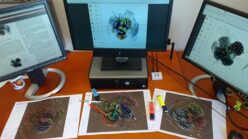As early put by Marc Andreessen (2011), a well-respected serial entrepreneur and venture capitalist who co-founded Netscape and later sold to AOL for $4.2 billion, “software is eating the world”. Every industry ranging from oil, gas, financial services, healthcare, education, and even defense are increasingly powered by software.
Software matters for our modern societies. There should be no doubts about it. Still, few people realize the importance of open-source software. From my experiences of talking with highly educated professionals without formal computer-related education, many do not know what open-source means. Neither they can give examples. This is even if they use it (without realizing it) on their Apple computer, their BMW car, their Android-based smartphone, or their Samsung TV. Worst than that, many associate it directly with software that does not cost (that you don’t need to buy).
To me this is surprising, one of the latest industry reports points out that:
- 99% of new software projects rely on open-source components;
- 78% of companies use open source software over proprietary software;
- 96% of applications have at least one open-source component;
- Open source makes up over 80% of the software code in use in modern applications;
- The top contributor to open source projects on GitHub (a popular hosting service for open-source software projects) is Microsoft;
- Over 70% of developers said that working on open-source software projects helped improve their skills;
Still, it is easy to spot active university students, lawyers, politicians, nurses, doctors and professors who don’t know what open-source software is, nor have “never heard about it”. How can something so impactful in our society be not even noticed by the general population? Maybe this lack of awareness explains why my research proposals related to open-source software don’t get more funding. After, most software runs in the hardware, being often invisible for the common users.
The point is software is very important, open-source software is also very important. This is because most software is either: (1) open-source per se, or (2) largely dependent on it. Still, people do not understand the meaning of open-source software. Many never hear about it. Maybe they heard about Linux, Android, or Firefox, but not open-source software. Often misunderstanding the concept with the concept of freeware.
Due to my research and past professional experience, I got invited a few times of times to give a talk about open-source software. Often to a young audience at universities (i.e., guest lectures) or to local businesses in Finland (e.g., training, seminars, tech Tuesdays, among other internal events in companies). Here I share my approach to talking about open-source software in a more general audience:
Whenever encountering a not-techy audience, intending to enhance their understanding and awareness of open-source software, I start by asking them to rank by openness vs. closeness the following dyads:
MS Encarta vs. Wikipedia
SD card vs. Memory stick
MS Office vs. Libreoffice
MS OneDrive vs NextCloud
This is a long process, often 20 to 30 minutes, but usually leads to a lot of discussion.
Then I highlight that “free software” is not “freeware”

Free as in freedom, not free as in beer. Most common languages have two words to refer to the “free” as in freedom, and “free” as in beer.
I also use the tangram analogy to talk about the value of transparency.

And the value of a more relaxed IP regime.

Finally I talk about my research with Abayomi Baiyere, where we argue that openness can be better understood across the dimensions of 1) transparency, 2) inclusiveness, 3) market, and 4) IP.
